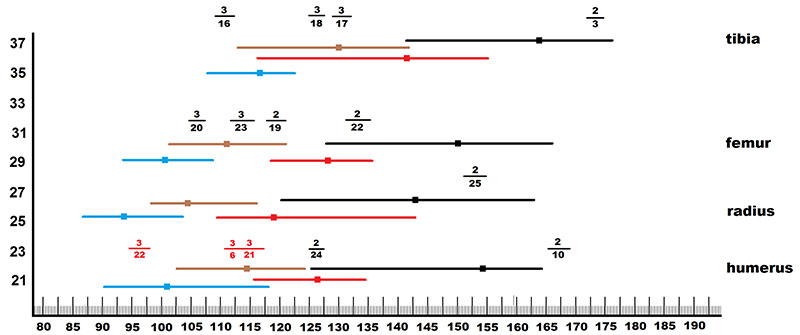FIGURE 1. Geographical location of Niedźwiedzia Cave in Poland (A), details of the Śnieżnik Massif region with white outline indicating the cave (B), representation of the cave explorations (C), and cave plan showing canids fossil-bearing areas (D) (modified from Marciszak et al., 2024).

FIGURE 2. The upper dentition of Canis lupus spelaeus from Niedźwiedzia Cave. A, left C1 (JN.1.400). B, left C1 (JN.1.154). C, left C1 (JN.1.148). D, left C1 (JN.1.199). E, left C1 (JN.1.184). F, left C1 (JN.1.322). G, left c1 (JN.1.399). H, left c1 (JN.1.156). I, left c1 (JN.1.149). J, right c1 (JN.1.153). K, right maxilla (JN.1.129). L, left maxilla (JN.1.130). M, right P4 (JN.1.452). N, left M1-M2 (JN.1.281). O, left M1 (JN.1.130). P, left M1 (JN.1.160). Q, left M1 (JN.1.159). R, left M1 (JN.1.158). S, right M1 (JN.1.297). T, right M1 (JN.1.424). U, right M1-M2 (JN.1.197). V, right M1 (JN.1.13). All individuals showed in the same scale (10 mm), 1 - buccal view, 2 - lingual view, 3 - occlusal view (G, H, and I mirrored).

FIGURE 3. Mandibles of Canis lupus spelaeus from Niedźwiedzia Cave. A, JN1.389 (left). B, JN.1.134 (left). C, JN.1.204 (right). D, JN.1.386 (left). E, JN.1.146 (left). F, JN.1.145 (right). G, JN.1.140 (right). H, JN.1.143 (right). I, JN.1.138 (left). J, JN.1.135 (right). K, JN.1.144 (left). L, JN.1.141 (right). M, JN.1.387 (left). N, JN.1.306 (right). All individuals showed in the same scale (10 mm), 1 - buccal view, 2 - lingual view, 3 - occlusal view.
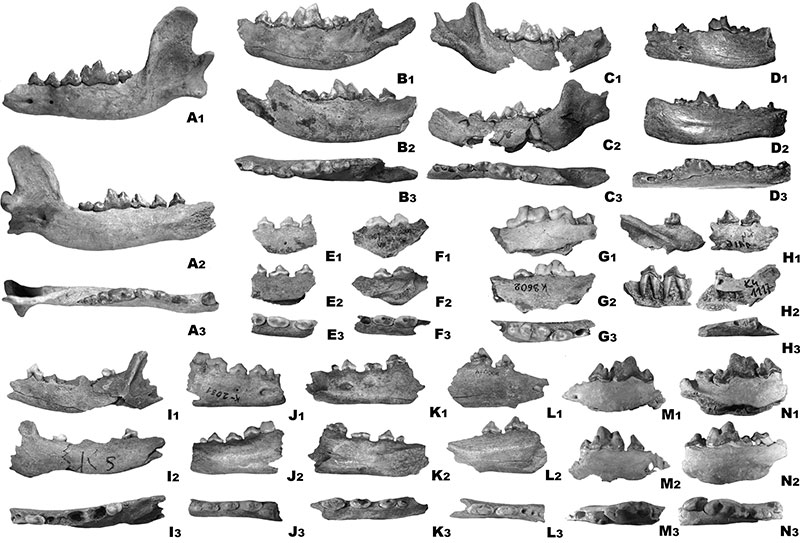
FIGURE 4. The m1 of Canis lupus spelaeus from Niedźwiedzia Cave. A, JN.1.178 (right). B, JN.1.195 (left). C, JN.1.174 (right). D, JN.1.428 (left). E, JN.1.181 (left). F, JN.1.193 (right). G, JN.1.433 (right). H, JN.1.1189 (left). All individuals showed in the same scale (10 mm), 1 - buccal view, 2 - lingual view, 3 - occlusal view (A, C, and G mirrored).
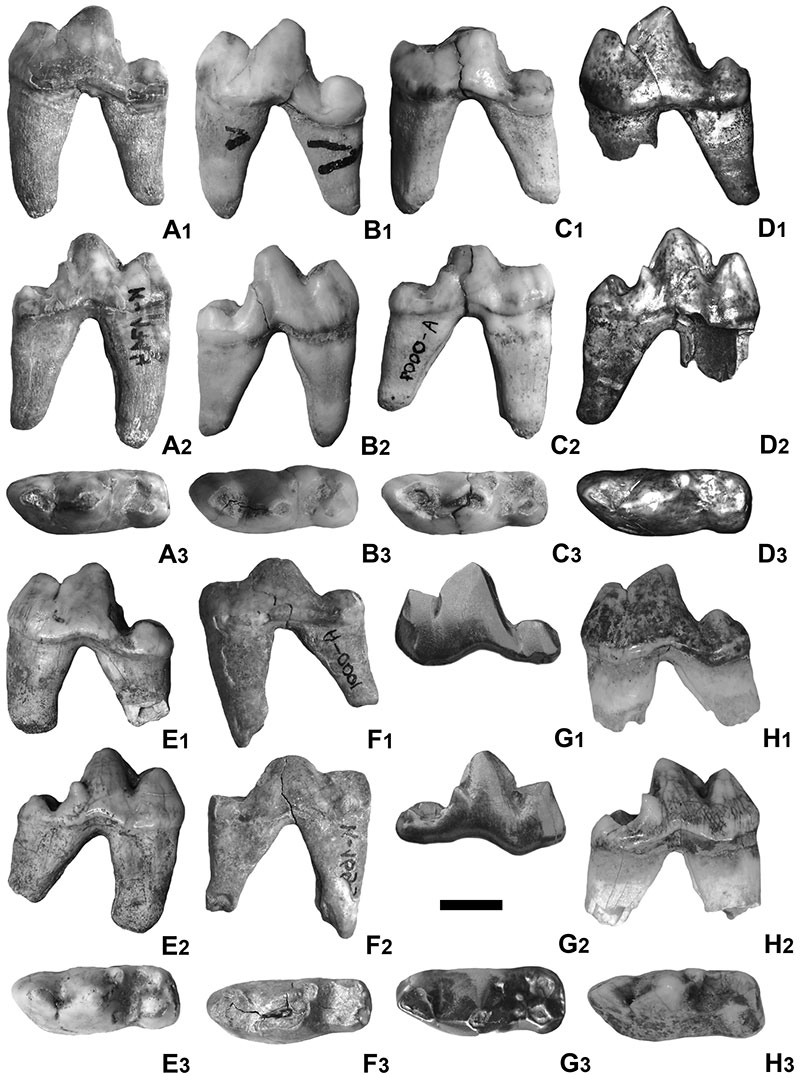
FIGURE 5. Graph showing the relationship between the length (L m1) and the trigonid breadth (B tr m1) in Canis lupus. For references see the Materials and Methods section.
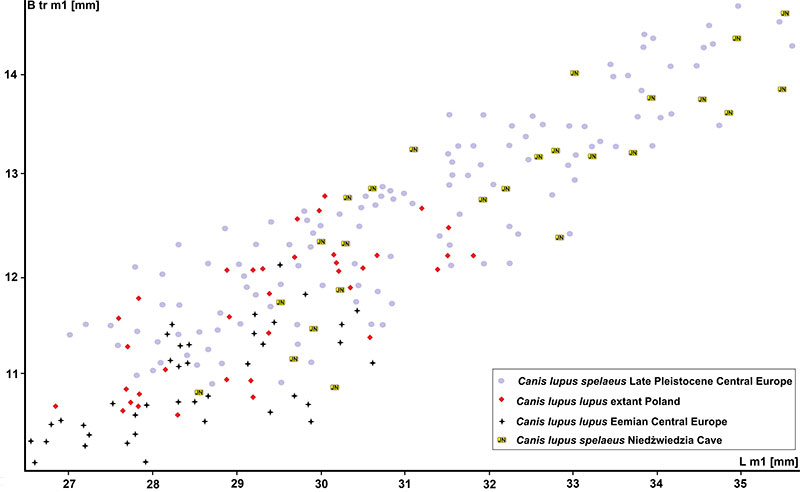
FIGURE 6. Long bones of Canis lupus spelaeus from Niedźwiedzia Cave. A, right humerus (JN.1.8). B, left radius (JN.1.19). C, right humerus (JN.1.11). D, right tibia (JN.1.12). E, right ulna (JN.1.16). F, right tibia (JN.1.13). All individuals showed in the same scale (50 mm), 1 - anterior view, 2 - medial view, 3 - posterior view, 4 - lateral view.
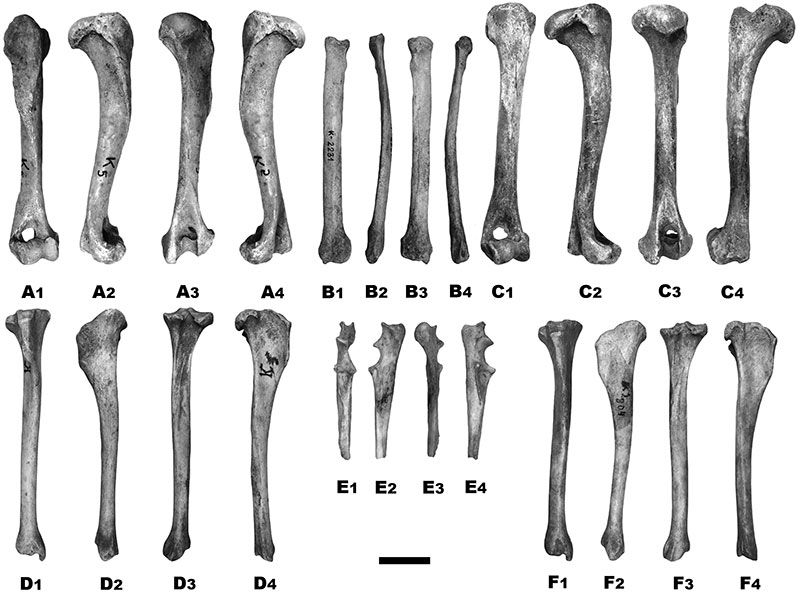
FIGURE 7. Metapodials of Canis lupus spelaeus from Niedźwiedzia Cave. A, right metacarpal 3 (JN.1.78). B, pathological left metacarpal 3 (JN.1.314). C, right metacarpal 5 (JN.1.100). D, left metatarsal 2 (JN.1.98). E, right metacarpal 4 (JN.1.85). F, left metatarsal 3 (JN.1.84). G, right metacarpal 2 (JN.1.356). H, left metatarsal 5 (JN.1.354). All individuals showed in the same scale (50 mm), 1 - anterior view, 2 - medial view, 3 - posterior view, 4 - lateral view.
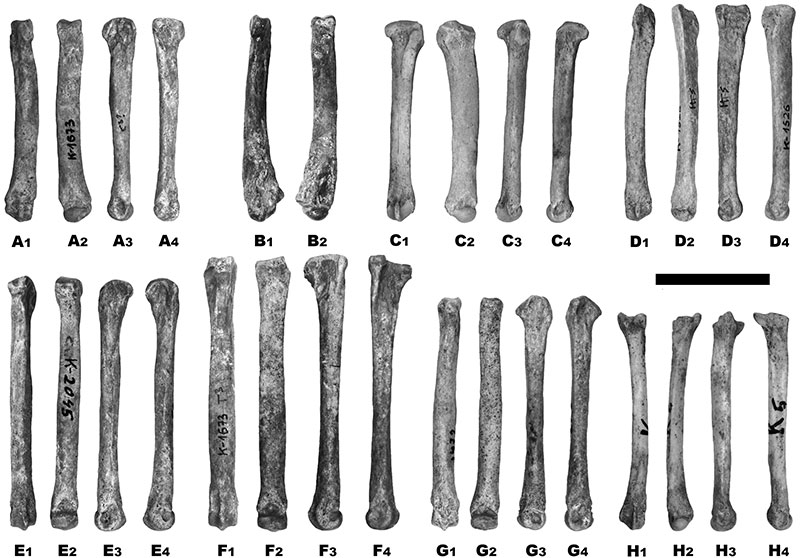
FIGURE 8. Graph showing the size dynamic of Canis lupus from Europe during the last 130 kya. For references see the Materials and Methods section.

FIGURE 9. Cranial material of foxes from Niedźwiedzia Cave. Vulpes vulpes: A, right mandible (JN.2.34). B, left mandible (JN.2.31). C, right maxilla (JN.2.15). D, right mandible (JN.2.33). Vulpes lagopus: E, left mandible (JN.3.8). F, right mandible (JN.3.2). G, right mandible (JN.3.3). H, left mandible (JN.3.8). I, left mandible (JN.3.10). All individuals showed in the same scale (15 mm), 1 - buccal view, 2 - lingual view, 3 - occlusal view.
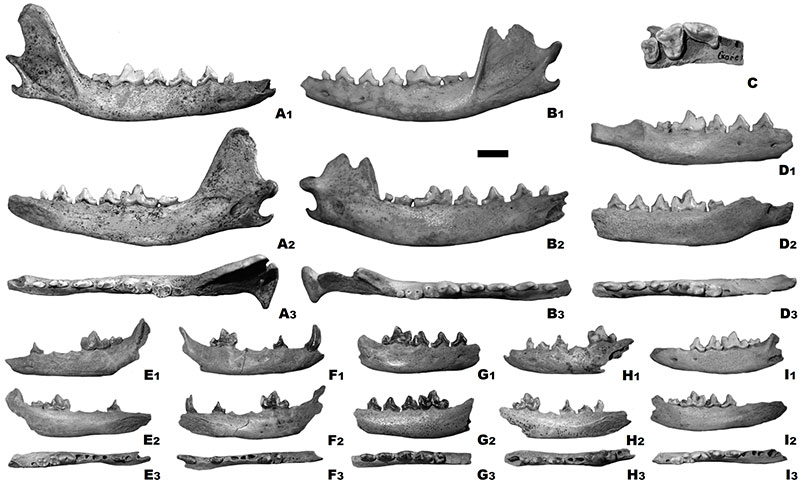
FIGURE 10. Comparison of the length (in mm) of long bones in extant Vulpes vulpes and Vulpes lagopus with the fossil specimens of these species from Niedźwiedzia Cave. Extant Vulpes vulpes: black values (♂♂) and red values (♀♀); extant Vulpes lagopus: brown values (♂♂) and blue values (♀♀). Numbers indicate the specimens from Niedźwiedzia Cave.
